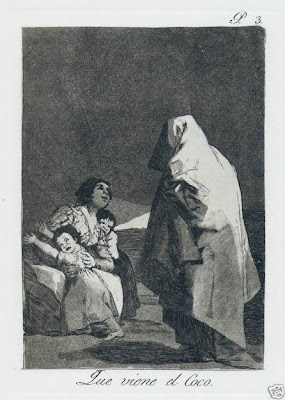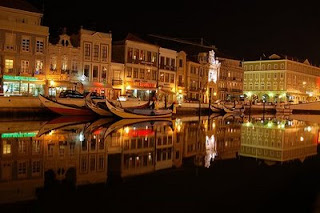Quick quiz: Which European country has the most liberal drug laws? (Hint: It's not the Netherlands.)

"You just need to rid yourselves of prejudice and take an intelligent approach." Portuguese Prime Minister Jose Socrates
Treating, not punishing
In 2001 newspapers around the world carried graphic reports of addicts injecting heroin in the grimy streets of a Lisbon slum. The place was dubbed Europe’s “most shameful neighbourhood” and its “worst drugs ghetto”. This lurid coverage was prompted by a government decision to decriminalise the personal use and possession of all drugs, including heroin and cocaine.
This “ultraliberal legislation”, said the foreign media, had set alarm bells ringing across Europe. The Portuguese were said to be fearful that holiday resorts would become dumping-grounds for drug tourists. Some conservative politicians denounced the decriminalisation as “pure lunacy”. Plane-loads of foreign students would head for the Algarve to smoke marijuana, predicted Paulo Portas, leader of the People’s Party. Portugal, he said, was offering “sun, beaches and any drug you like.”
Yet after all the furore, the drug law was largely forgotten by the international and Portuguese press—until 2 years ago, when the Cato Institute, a libertarian American think-tank, published a study of the new policy by a lawyer, Glenn Greenwald. In contrast to the dire consequences that critics predicted, he concluded that “none of the nightmare scenarios” initially painted, “from rampant increases in drug usage among the young to the transformation of Lisbon into a haven for ‘drug tourists’, has occurred.”
Mr Greenwald claims that the data show that “decriminalisation has had no adverse effect on drug usage rates in Portugal”, which “in numerous categories are now among the lowest in the European Union”. This came after some rises in the 1990s, before decriminalisation. The figures reveal little evidence of drug tourism: 95% of those cited for drug misdemeanours since 2001 have been Portuguese. The level of drug trafficking, measured by numbers convicted, has also declined. And the incidence of other drug-related problems, including sexually transmitted diseases and deaths from drug overdoses, has “decreased dramatically”.
There are widespread misconceptions about the Portuguese approach. “It is important not to confuse decriminalisation with depenalisation or legalisation,” comments Brendan Hughes of the European Monitoring Centre for Drugs and Drug Addiction, which is, coincidentally, based in Lisbon. “Drug use remains illegal in Portugal, and anyone in possession will be stopped by the police, have the drugs confiscated and be sent before a commission.”
Nor is it uncommon in Europe to make drug use an administrative offence rather than a criminal one (putting it in the same category as not wearing a seat belt for instance). What is unique, according to Mr Hughes, is that offenders in Portugal are sent to specialist “dissuasion commissions” run by the government, rather than into the judicial system. “In Portugal,” he says, “the health aspect [of the government’s response to drugs] has gone mainstream.” The aim of the dissuasion commissions, which are made up of panels of two or three psychiatrists, social workers and legal advisers, is to encourage addicts to undergo treatment and to stop recreational users falling into addiction. They have the power to impose community work and even fines, but punishment is not their main aim.
Officials believe that, by lifting fears of prosecution, the policy has encouraged addicts to seek treatment. This bears out their view that criminal sanctions are not the best answer. “Before decriminalisation, addicts were afraid to seek treatment because they feared they would be denounced to the police and arrested. Now they know they will be treated as patients with a problem and not stigmatised as criminals.” says Manuel Cardoso, deputy director of the Institute for Drugs and Drug Addiction.
The number of addicts registered in drug-substitution programmes has risen from 6,000 in 1999 to over 24,000 in 2008, reflecting a big rise in treatment (but not in drug use). Between 2001 and 2007 the number of Portuguese who say they have taken heroin at least once in their lives increased from just 1% to 1.1%. For most other drugs, the figures have fallen: Portugal has one of Europe’s lowest lifetime usage rates for cannabis. And most notably, heroin and other drug abuse has decreased among vulnerable younger age-groups, according to Mr Cardoso.
The share of heroin users who inject the drug has also fallen, from 45% before decriminalisation to 17% now, he says, because the new law has facilitated treatment and harm-reduction programmes. Drug addicts now account for only 20% of Portugal’s HIV cases, down from 56% before. “We no longer have to work under the paradox that exists in many countries of providing support and medical care to people the law considers criminals.”
Portugalijos narkotikų politika
Greita viktorina: Kuri Europos šalis turi liberaliausius narkotikų įstatymus? (Užuomina: Tai ne Olandija.)
„Jums tereikia atsikratyti prietarų ir pasitelkti protingą požiūrį“ Portugalijos Ministras Pirmininkas Jose Socrates
Gydyti , ne bausti
2001 metais pasaulio laikraščiuose buvo apstu pranešimų ir nuotraukų kuriuose buvo vaizdžiai parodyti narkomanai besišvirkščiantys heroiną nešvariose Lisabonos landynių gatvėse. Vieta buvo praminta Europos „gėdingiausiu rajonu“ ir jos „blogiausiu narkotikų getu“. Ši sukrečianti aprėptis lėmė vyriausybės sprendimą dekriminalizuoti visų narkotikų asmeninį turėjimą ir vartojimą, įskaitant heroiną ir kokainą.
Toks „ultraliberalus teisės aktas“ užsienio žiniasklaidos buvo pavadintas “pavojaus varpų skambėjimų visai Europai”. Portugalai bijojo, kad jų kurortai taps narkomanų turistų iškrovos vieta. Kai kurie konservatyvūs politikai dekriminalizaciją pasmerkė kaip „gryną beprotybę“. Daugybe užsienio studentų vyks į Algarve parūkyti marichuanos, pranašavo Paulo Portas, Liaudies partijos lyderis. Jis sakė, kad Portugalija siūlė „saulė, paplūdimius ir bet kokius narkotikus, kurie jums patinka.”
Tačiau po viso triukšmo, apie narkotikų įstatymą buvo iš esmės užmiršta. Iki to, kai Cato Institutas išleido advokato Gleno Greenwaldo tyrimą apie naująją politiką. Priešingai skaudžioms pasekmėms, kurias prognozavo kritikai, jis padarė išvadą, kad "nė vienas iš košmariškų scenarijų, nuo paplitusio narkotikų vartojimo tarp jaunimo iki Lisabonos transformacijos į narkomanų turistų prieglobstį, neįvyko."
Ponas Greenwaldas teigia, kad duomenys rodo, jog "dekriminalizavimas neturėjo neigiamos įtakos Portugalijos narkotikų vartojimo rodikliams", kurie "daugelyje kategorijų, dabar yra vieni mažiausių Europos Sąjungoje". Skaičiai atskleidžia mažai įrodymų dėl su narkotikais susijusio turizmo: 95% su narkotikais susiję baudžiamieji nusižengimai nuo 2001 m. buvo įvykdyti portugalų. Prekybos narkotikais lygis, išmatuojamas pagal nuteistųjų skaičių, taip pat sumažėjo. Kitų, su narkotikais susijusių problemų, įskaitant lytiniu būdu plintančių ligų ir mirčių nuo narkotikų perdozavimo atvejų skaičius, "labai smarkiai krito".
Yra paplitęs neteisingas supratimas apie portugalų metodą. "Labai svarbu nepainioti dekriminalizavimo su legalizavimu", komentuoja Brendanas Hughesas iš Europos Narkotikų ir Narkomanijos stebėjimo Centro, kurio būstinė atsitiktinai yra Lisabonoje. „Narkotikų vartojimas Portugalijoje tebelieka neteisėtas ir kiekvienas, juos turintis bus sustabdytas policijos, narkotikai bus konfiskuoti, o nusikaltėlis bus siunčiamas komisijai."
Kas yra neįprasta Europoje, kad narkotikų vartojimas yra administracinės teisės pažeidimu, o ne baudžiamosios (toje pačioje kategorijoje kaip pavyzdžiui saugos diržų nesegėjimas). Pagal Poną Hughes, unikalu yra tai, kad pažeidėjai Portugalijoje yra siunčiami į specialias "atkalbinėjimo komisijas" valdomas vyriausybės, o ne į teismų sistemą. "Portugalijoje valdžios atsakas į narkotikų vartojimą nuėjo integracijos keliu." Atkalbinėjimo komisijų, kurios sudaromos iš dviejų ar trijų psichiatrų, socialinių darbuotojų ir juridinių konsultantų, tikslas yra skatinti narkomanus gydytis ir sustabdyti pramoginių vartotojų patekimą į priklausomybę. Jie turi galią taikyti viešuosius darbus ir net baudas, tačiau bausmė nėra pagrindinis jų tikslas.
Pareigūnai yra įsitikinę, kad persekiojimo baimės kelimo politika paskatino narkomanus gydytis. Tai, jų nuomone, patvirtina idėją, kad baudžiamosios sankcijos nėra geriausias atsakymas. “Prieš dekriminalizaciją narkomanai bijojo gydytis, nes žinojo, kad apie juos bus pranešta policijai ir jie bus suimti. Tuo tarpu dabar jie žino, kad su jais bus elgiamasi kaip su pacientais turinčiais problemą, o ne niekinama kaip nusikaltelius.” sako Manuelis Cardoso, Narkotikų ir Narkomanijos instituto direktoriaus pavadotojas.
Narkomanų, registruotų narkotikų pakaitalų programoms, skaičius išaugo nuo 6 tūkstančių 1999 metais iki daugiau kaip 24 tūkstančių 2008 metais. Skaičiai atspindi didelį gydymo augimą, bet ne narkotikų vartojimą. Tarp 2001 ir 2007 metų portugalų, kurie sako esą nors kartą vartoję heroiną, skaičius išaugo nuo vos 1% iki 1,1%, daugelio kitų narkotikų vartojimo skaičiai sumažėjo. Pasak Pono Cardoso Portugalijoje yra sunaudojama mažiausiai kanapių Europoje. Svarbu tai, kad heroino ir kitų narkotikų vartojimas sumažėjo tarp pažeidžiamiausių jaunesnio amžiaus grupių.
Heroino vartotojų, kurie švirkščiasi narkotikus dalis taip pat sumažėjo nuo 45% prieš dekriminalizaciją iki 17% dabar, nes naujas įstatymas palengvino gydymo ir žalos mažinimo programų kūrimasį. Narkomanai dabar sudaro 20% Portugalijos ŽIV atvejų lyginant su ankstesniais 56%. “Mes jau nebeturime remtis paradoksu egzistuojančiu daugelyje šalių, teikiančių paramą ir medicinos pagalbą žmonėms, kurie įstatymo yra pripažinti nusikalteliais.” M. Cardoso.





 Kas yra Koko?
Kas yra Koko?



